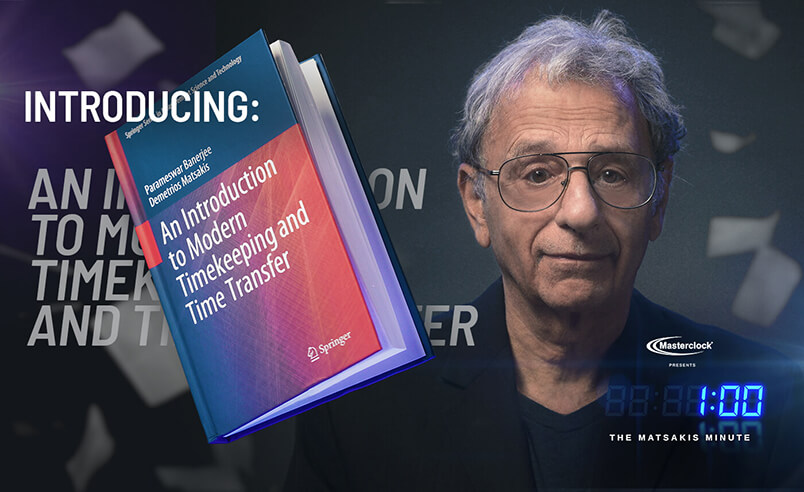As this contentious year comes to its end, perhaps we should look to the heavens for a sign of convergence. It’s been done before. Try the western sky after sunset on December 21, our shortest day. Behold, you will see Jupiter and Saturn closer together than they have been seen for 800 years! Father and son in Greek mythology, their relationship was a little stormy at first [1], but on this Solstice, in the constellation Aquarius [2], they will be only 0.1 degrees apart—so close that you might need binoculars to tell them apart.
12/18/20 By Dr. Matsakis
Musings on the Solstice
Let us be rational though—was 2020 really so bad in terms of science and technology? While Masterclock continued to keep the beat, advances in celestial research brought revelation after revelation.
In the search for signs of extraterrestrial life, the discovery of widespread water on the Moon [3] and the possible possibility of life in the Venusian atmosphere titillated the astronomy community [4]. Further drama came when NASA’s OSIRIS-Rex probe reached the carbonaceous asteroid Bennu and found that this potentially Earth-colliding body had only a tiny landing spot that was level enough for a landing. As things turned out, this probe scooped up so many rocks that it had trouble securing them and is now heading home with its precious payload [5].
The Japanese upped their space game as well. Their probe, Hayabusa2, gathered a rock sample from the stony asteroid Ryugu and parachuted it into the Australian outback while flying past Earth on its way to yet another asteroid [6]. Although only 6 grams were returned, JAXA (the Japanese space agency) intends to share samples with several institutions worldwide, such as NASA.
Not even Astronomy could avoid 2020’s wrath entirely, however, as Puerto Rico’s Arecibo Observatory’s 1000-foot dish collapsed—a belated casualty of Hurricane Maria. The community has not given up on rebuilding it [7], but China’s clone, the Five Hundred Meter Aperture Spherical Telescope (FAST), is now online. And, because Astronomy research benefits all of us earthlings, they immediately offered to share observing time with western scientists [8]. Other work in China included the launch of a probe to bring back Moon rocks, which returned December 16 [9]. While we are all looking forward to the results, the person most interested might be Dr. Rebecca Boyle, whose very convincing explanation of how the Moon was formed uses intense computer simulations and data from rocks returned by the Apollo landings. Her work points to a baby Earth collision with a slightly smaller protoplanet, Thalia. This formed a synestia—a hot, donut-shaped, liquid, and rapidly-rotating body—that in a few million years lost most of its spin due to tidal effects involving the Sun, Moon, and Earth, which eventually pulled the cooling Moon to its current place. Dr. Boyle’s hypothesis would explain why the lunar crust’s elemental composition is extremely similar to that of the Earth’s crust, except that the lighter elements boiled off during the hot phase [10].
Other celestial highlights in 2020 included gravitational radiation detectors LIGO’s and Virgo’s announcement of 39 new discoveries, including the puzzling existence of a “midsize” black hole with >100 but <100,000 times the Sun’s mass and, better yet, the announcement that funding was secured for an upgrade that would allow them to detect events at the rate of 1 a day, from up to 400 million lightyears away [11].
The Japanese, ever cooperative, advanced the merger of astronomy and timekeeping by using Very Long Baseline Interferometry (VLBI) to observe quasars at the edges of the observable universe and to compare the accuracy of their futuristic optical clocks with those being developed in Italy [12].
In the timing community, the Consultative Committee for Time and Frequency met virtually in October to review hot topics such as redefining both frequency and time. Rather than one second being 9,192,631,770 periods of oscillation of the undisturbed cesium atom, it will soon be a number 5 orders of magnitude larger, related to whichever atom has been demonstrated, via peer review, to be the most precisely measurable with the exciting and competing new ultra-precise optical technologies [13]. The committee also discussed plans/hopes to redefine Coordinated Universal Time to get rid of those troublesome leap seconds (see my upcoming blog).
Despite all the excitement, we even managed to keep up with the emerging trends toward diversity and cultural sensitivity. For example, three women received science Nobel prizes this year—Andrea Ghez, for her important work on the black hole at the center of our galaxy, and Jennifer Doudna and Emmanuelle Charpentier, for developing the CRISPR-Cas9 method of genome editing [14]. Closer to home, the SMPTE Standards Group voted to gradually replace the Master/Slave terminology with Leader/Helper [15], and many expect the IEEE’s PTP management group to follow suit. Some have asked if the term “master clock” is culturally insensitive. I don’t think so, because a “master clock” just means a clock so good that its time is the best reference to use. We chose this name not as a boast, but as a motto. We are proud to be part of cooperative community that advances our times.
Footnotes
[1] The Illiad, Homer, circa 1000 BC; see also The Theogony, Hesiod, 700 BC. Most mortals would like nothing more than to have their children outshine them. But Saturn (Chronos), the ruler of the universe and the king of the Titans, wasn’t so excited about it. And even Jupiter (Zeus), after leading the gods in the battle for power, did not marry the goddess Thetis because of a prophecy that she would bear a son who would be greater than his father. (Eventually she did marry, and her son was Achilles. Brad Pitt may have gotten most of the story wrong when he played Achilles in Troy, but he did get the handsomeness right.)
[2] https://www.usno.navy.mil/USNO/tours-events/sky-this-week/the-sky-this-week-2020-november-10-17. Astrologers place it in Aquarius. Astronomers say that, due to precession over the last two millennia, the constellations have shifted by one month. So for them it is in Capricorn, but what do they know? Either way it is a rare event, and it resurrects Kepler’s 1614 theory that, when this same conjunction happened in 7 BC, it was the Christmas star that led the Magii to the west. But his speculation is only one of many listed in https://en.wikipedia.org/wiki/Star_of_Bethlehem#Planetary_conjunction. See also https://www.nytimes.com/2020/12/06/science/space/jupiter-saturn-align-christmas-star.html.
[3] https://www.technologyreview.com/2020/10/26/1011228/water-moon-more-accessible-nasa-sofia-lro-glass-micro-cold-trap/
It’s also on Mars: https://www.nasa.gov/press-release/nasa-confirms-evidence-that-liquid-water-flows-on-today-s-mars
[5] https://www.nasa.gov/osiris-rex/
[9] https://www.theguardian.com/science/2020/dec/01/china-moon-rocks-change-5-spacecraft
[10] https://www.nytimes.com/2019/07/10/science/moon-facts.html
[11] https://www.ligo.org/news.php
[12] https://www.nict.go.jp/en/press/2020/10/08-1.html
[13] The Fiftieth Anniversary of the Atomic Second, F. Arias, D. Matsakis, P. Tavella, and T. Quinn, Trans.-UFFC, 2018
[14] https://www.nytimes.com/article/2020-nobel-prize-winners.html
[15] https://f.hubspotusercontent00.net/hubfs/5253154/Standards%20Files/ag-16-2020.pdf
About Dr. Demetrios Matsakis
 Dr. Demetrios Matsakis attended MIT as an undergraduate and received his PhD in physics from UC Berkeley, where he studied under the inventor of the maser and laser; and built specialized ones in order to observe interstellar dust clouds where stars are born. His first job was at the U.S. Naval Observatory, building water vapor radiometers and doing interferometry to observe quasars and galaxies at the edge of the observable universe. After developing an interest in clocks, Dr. Matsakis would spend the next 25 years working hands on with most aspects of timekeeping – from clock construction, to running the USNO’s Time Service Department, to international policy. He has published over 150 papers and counting, but gets equal enjoyment out of beta-testing his personal ensemble of Masterclock products.
Dr. Demetrios Matsakis attended MIT as an undergraduate and received his PhD in physics from UC Berkeley, where he studied under the inventor of the maser and laser; and built specialized ones in order to observe interstellar dust clouds where stars are born. His first job was at the U.S. Naval Observatory, building water vapor radiometers and doing interferometry to observe quasars and galaxies at the edge of the observable universe. After developing an interest in clocks, Dr. Matsakis would spend the next 25 years working hands on with most aspects of timekeeping – from clock construction, to running the USNO’s Time Service Department, to international policy. He has published over 150 papers and counting, but gets equal enjoyment out of beta-testing his personal ensemble of Masterclock products.

